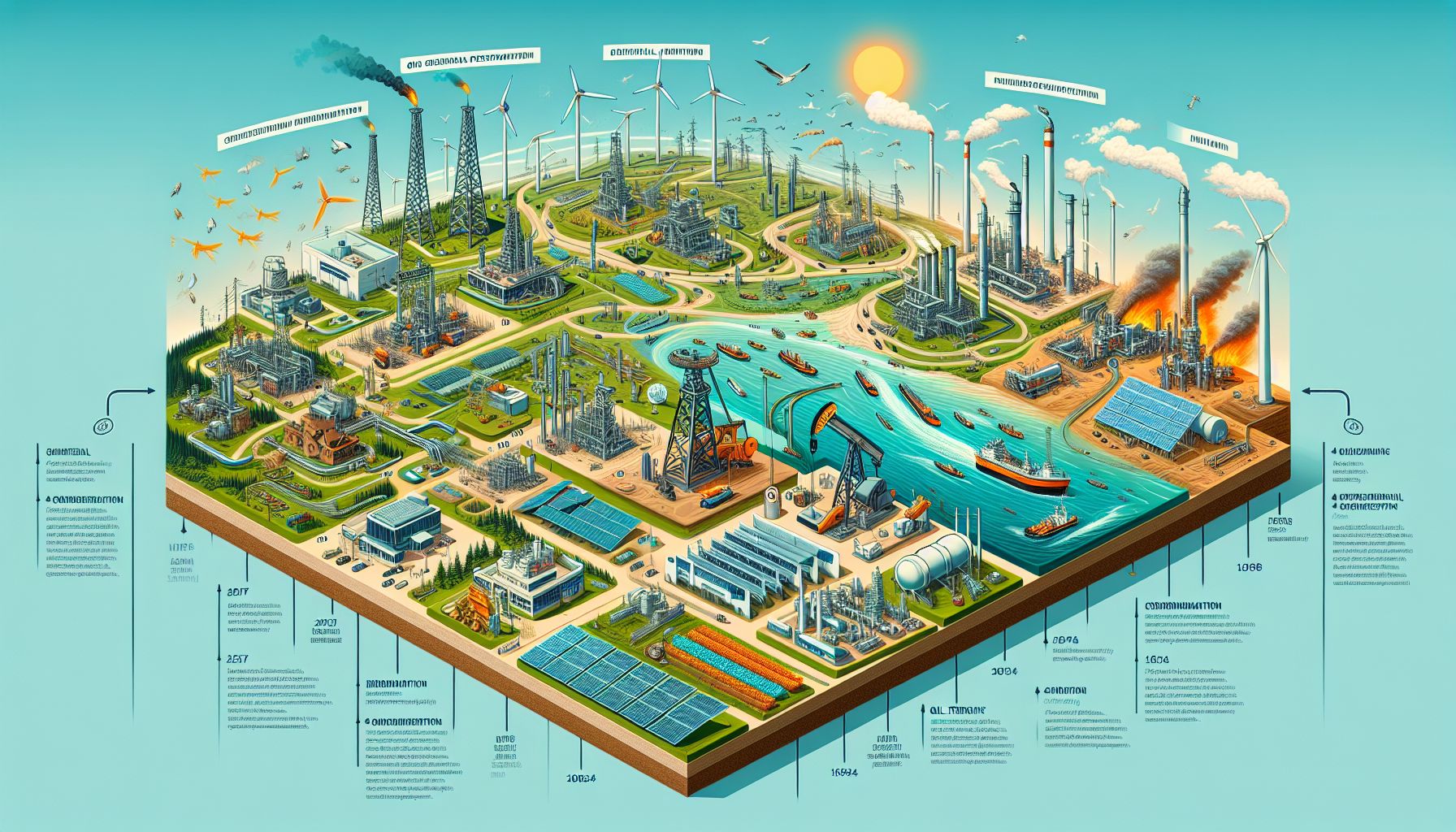
Canada’s oil and gas industry has undergone a remarkable transformation in recent years, experiencing a myriad of challenges and opportunities that have shaped its current landscape. Despite its rich history and significant contributions to the country’s economy, the industry continues to face a host of uncertainties as it navigates an ever-changing global energy market.
The sheer complexity and perplexity of the oil and gas industry in Canada can make it a challenging subject to grasp. From the exploration and extraction of natural resources to the transportation and distribution of petroleum products, there are countless moving parts that influence the industry’s dynamics. As such, it is crucial to delve into the enigmatic evolution of this sector to truly understand its intricacies.
In the early days of Canada’s oil and gas industry, the focus was primarily on conventional oil reserves, such as those found in Alberta’s oil sands. These resources played a pivotal role in driving economic growth and prosperity across the country. However, as global demand for energy continued to rise, the industry began to explore alternative sources of oil and gas, such as shale formations and offshore reserves.
This shift towards unconventional resources opened up new opportunities for investment and innovation within the industry. Companies were able to leverage advanced technologies to extract oil and gas from previously inaccessible locations, leading to a surge in production levels. The development of hydraulic fracturing, or fracking, for example, revolutionized the industry by allowing for the extraction of oil and gas from tight rock formations.
Despite these advancements, the oil and gas industry in Canada has not been without its challenges. Environmental concerns surrounding the extraction and transportation of fossil fuels have placed the industry under increasing scrutiny. Issues such as water contamination, air pollution, and greenhouse gas emissions have prompted calls for greater environmental stewardship and sustainable practices within the sector.
In response to these challenges, the industry has taken steps to improve its environmental performance and reduce its carbon footprint. Companies have invested in renewable energy projects, carbon capture and storage technologies, and other initiatives aimed at mitigating the impact of their operations on the environment. These efforts reflect a growing recognition within the industry of the need to balance economic growth with environmental responsibility.
As Canada’s oil and gas industry continues to evolve, it faces a host of uncertainties and challenges on the horizon. The shift towards renewable energy sources, the emergence of new technologies, and the changing geopolitical landscape all present unique opportunities and threats to the industry. The ability of companies to adapt to these changes and embrace innovation will ultimately determine their success in the years to come.
In conclusion, the enigmatic evolution of Canada’s oil and gas industry is a testament to the sector’s resilience and adaptability in the face of adversity. While the challenges may be daunting, the industry’s ability to innovate and thrive in a rapidly changing world is a testament to its enduring strength and vitality. By embracing sustainable practices and harnessing new technologies, the industry can continue to play a vital role in driving economic growth and prosperity for Canada for many years to come.







